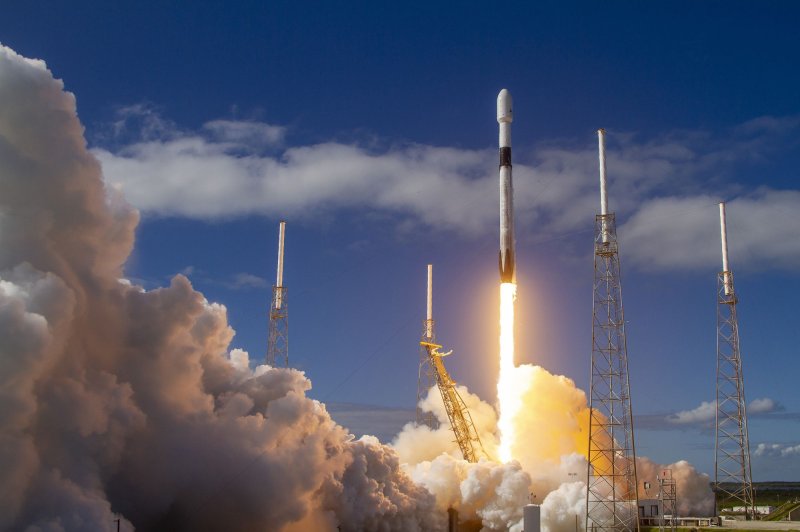A SpaceX rocket lifts off on Monday, carrying 60 Starlink satellites into orbit from Cape Canaveral Air Force Station, Florida. Photo by SpaceX/UPI |
License Photo
ORLANDO, Fla., Nov. 11 (UPI) -- SpaceX launched its second batch of 60 of Starlink satellites on a Falcon 9 rocket from Cape Canaveral Air Force Station in Florida on Monday morning.
An hour after the 9:56 a.m. launch, the company showed video of the satellites deploying successfully in orbit.
The launch was the first time SpaceX has reused a fairing, or nose cone. The fairing for this mission previously covered the Arabsat-6A satellite the company launched in April. It was also the first time SpaceX reused a rocket booster for the fourth time, which landed and will now be used for a fifth time.
Starlink is SpaceX's entry into a new industry, an effort to provide high-speed reliable Internet service through a network of hundreds of satellites in low-earth orbit. The company has plans for up to 30,000 satellites eventually.
A SpaceX spokesperson said ships that normally attempt to catch the fairing halves as they fall into the ocean were not doing that on Monday because of high seas, but the fairing would be fished out of the water later.
The spokesperson also said one of the satellites may not be working properly, and it may be deorbited. The Starlink satellites are designed to deorbit and burn up in the atmosphere at the end of their lifespan.
SpaceX previously launched 60 Starlink satellites in May. The launch in May was the heaviest payload the Falcon 9 ever carried.
Since then, founder and CEO Elon Musk said he had tested the network, tweeting Oct. 22 that he was "Sending this tweet through space via Starlink satellite."
In May, SpaceX engineer Tom Praderio said the company tested Starlink's capability with the Air Force's Global Lightning program, demonstrating 600 megabytes per second of throughput to an aircraft in flight.
SpaceX is one of several big players trying to start new networks that use thousands of non-geostationary satellites to offer high-speed Internet and other types of communication around the globe. The focus is on boosting Internet access to rural areas first.
Others companies working on large new constellations include OneWeb, which launched its first six satellites in February, and Telesat.















